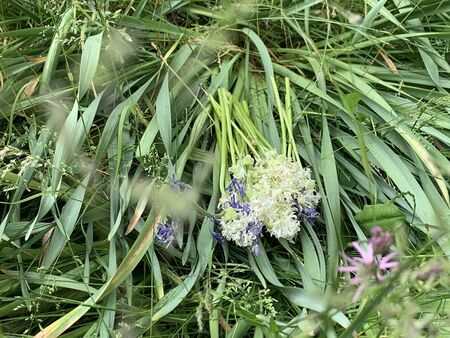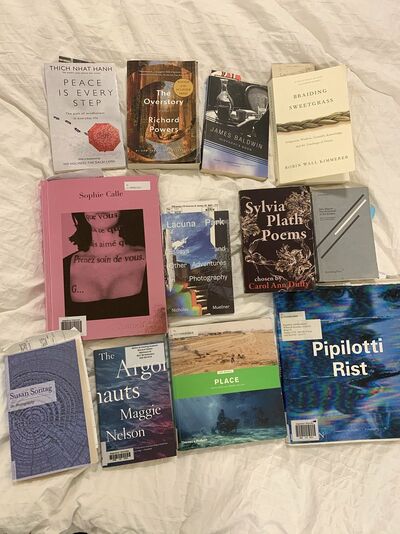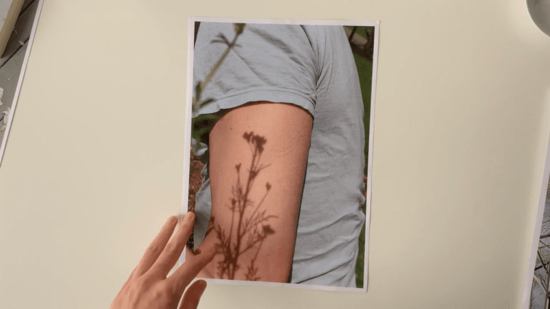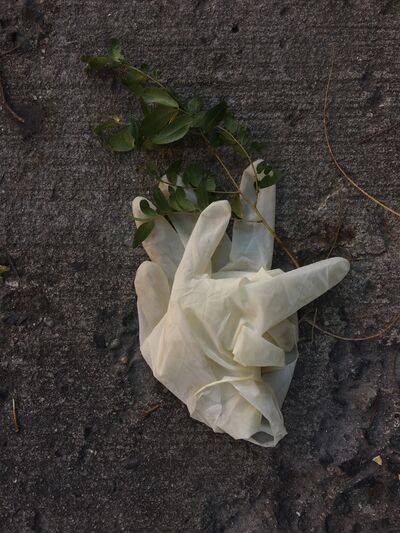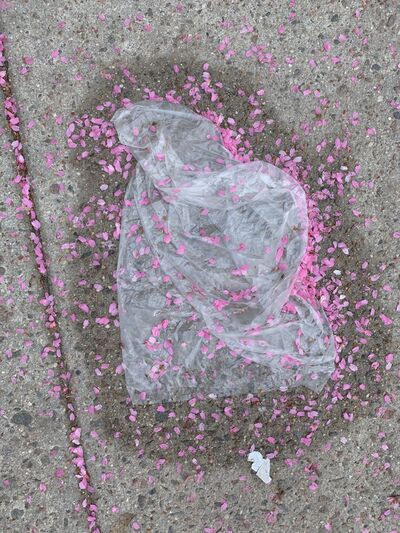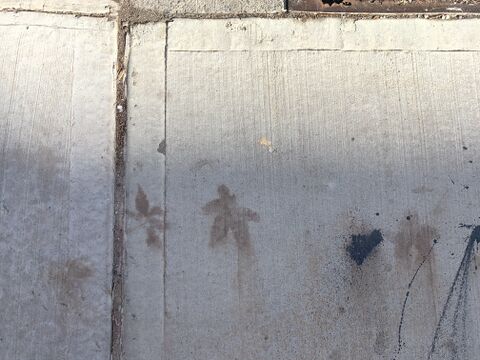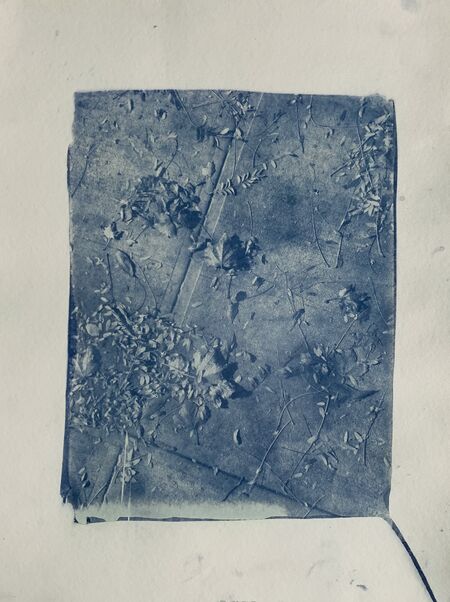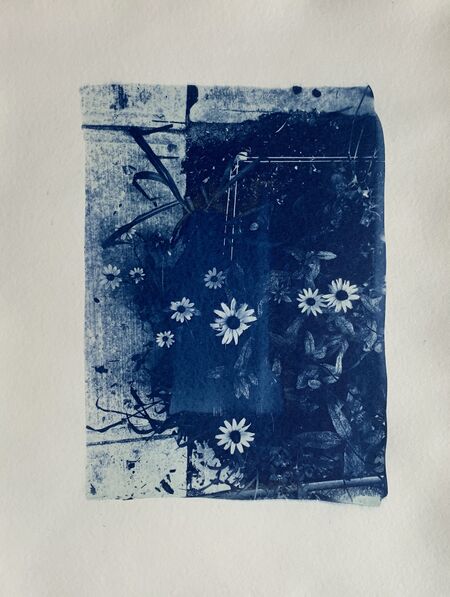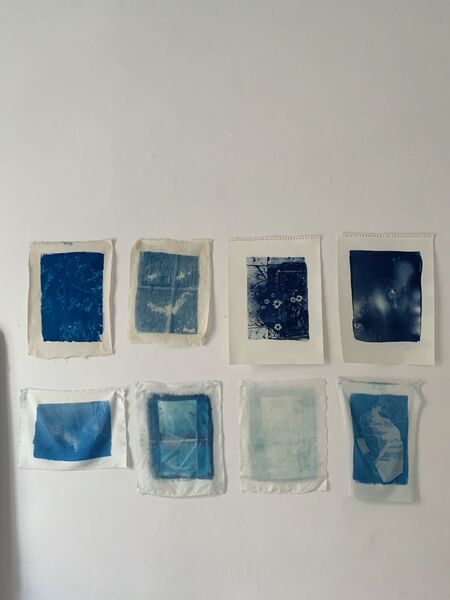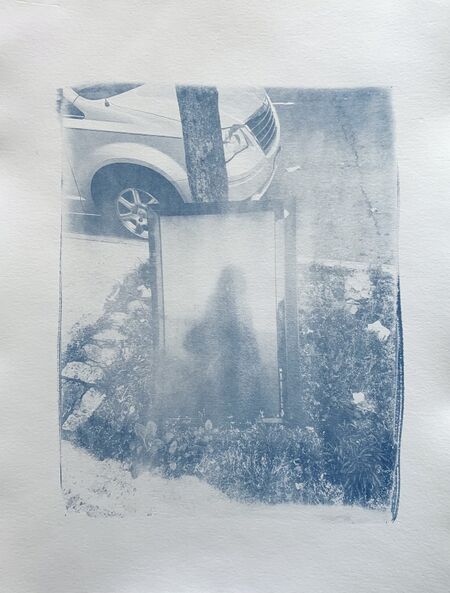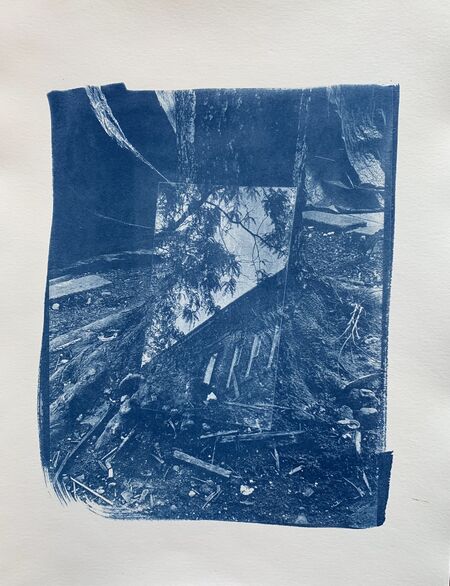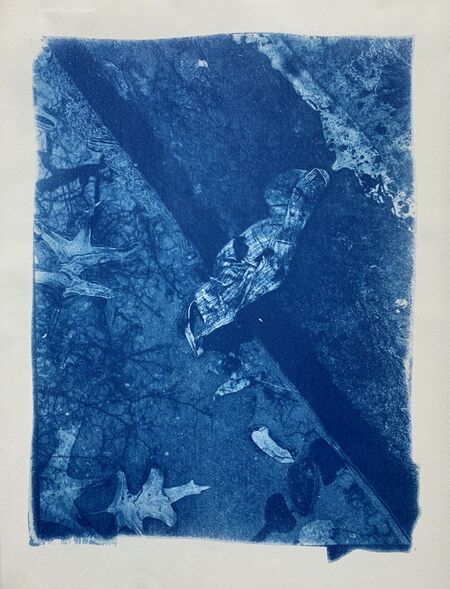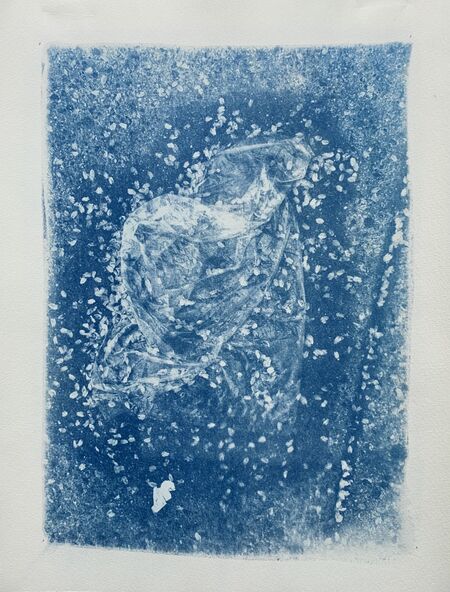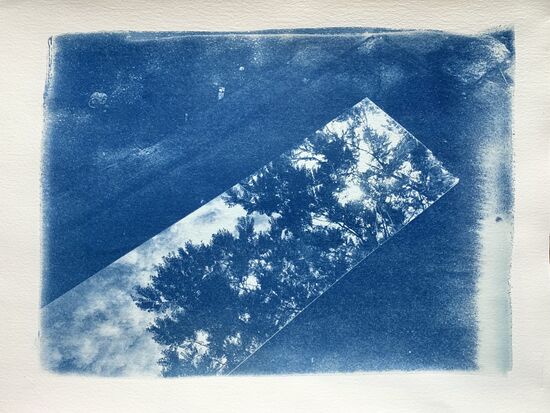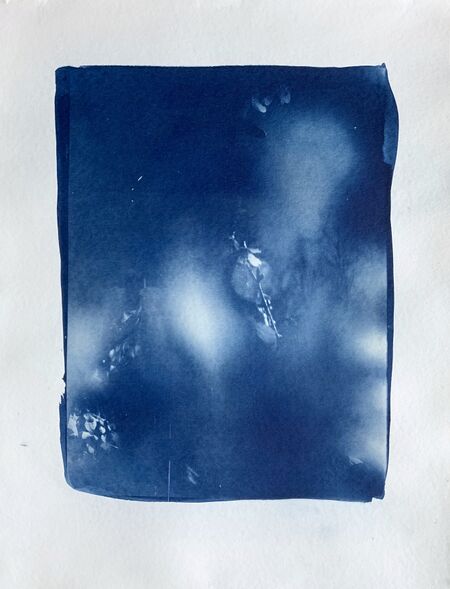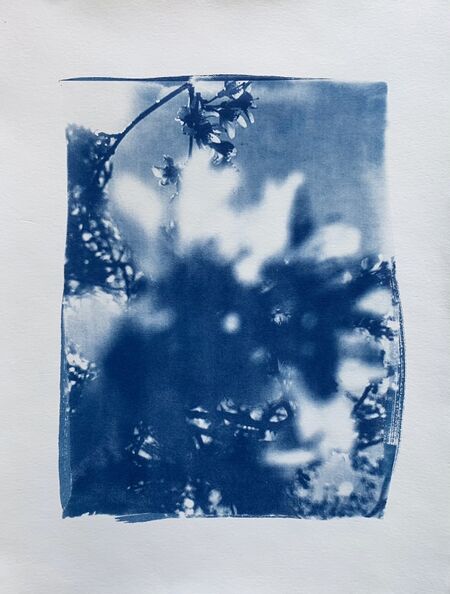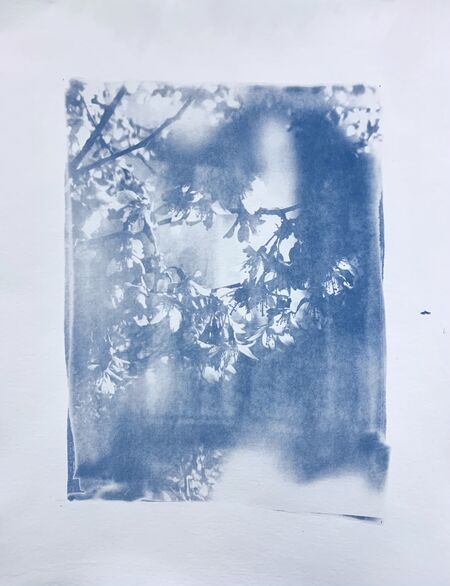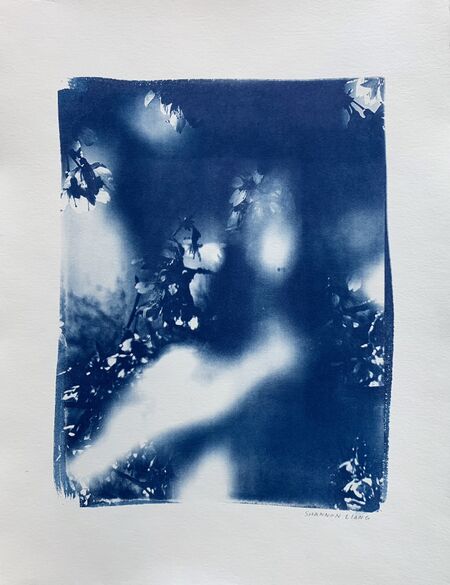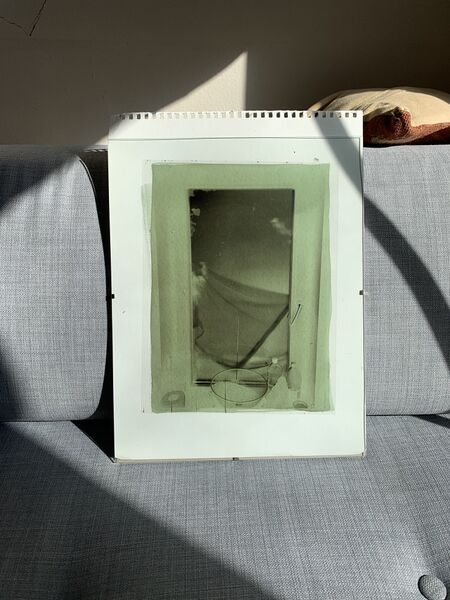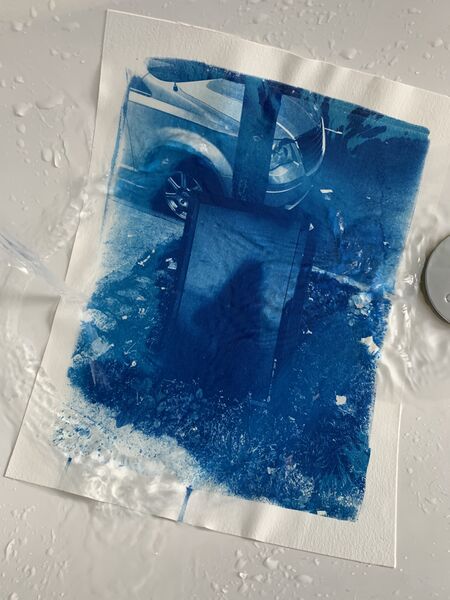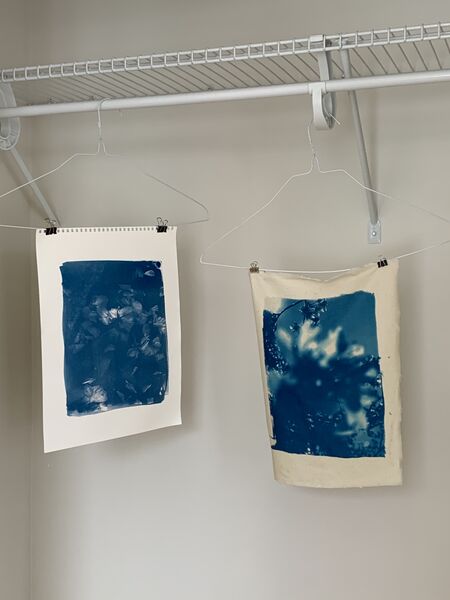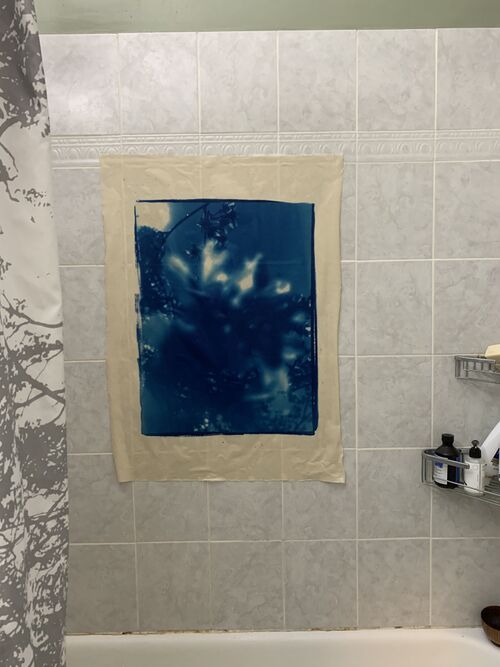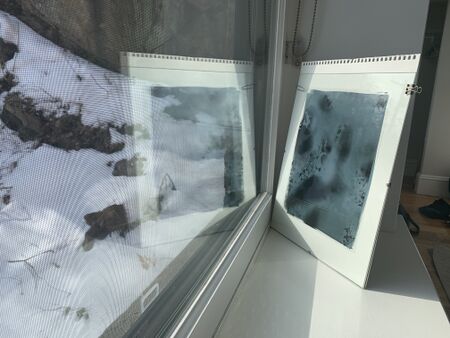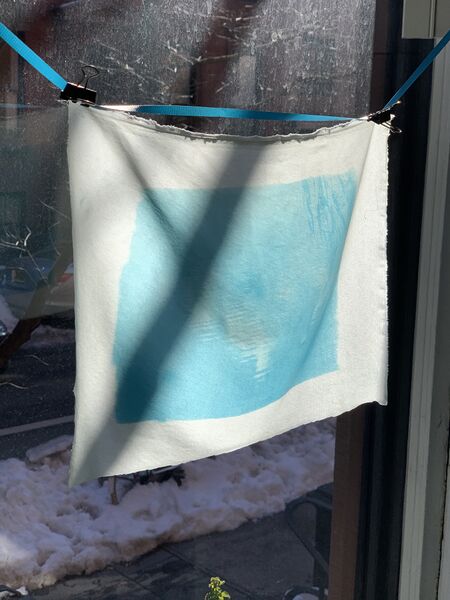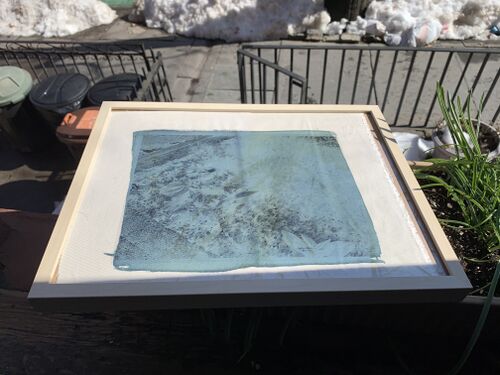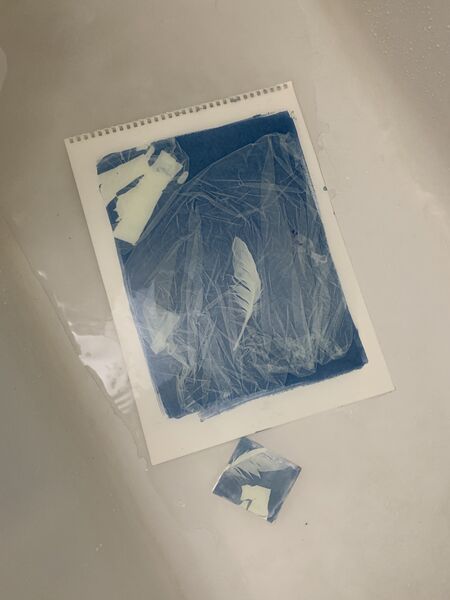User:Shannon/Interview: Difference between revisions
No edit summary |
No edit summary |
||
| Line 16: | Line 16: | ||
Remembering that everything is permeable, and part of something else, helps me to deal with my own anxieties and struggles in my transition to living in Rotterdam at this time. It’s a way for me to cope with feeling alone, and to remind myself that I don’t have to bear everything on my own. Things seep into me and I seep into things. | Remembering that everything is permeable, and part of something else, helps me to deal with my own anxieties and struggles in my transition to living in Rotterdam at this time. It’s a way for me to cope with feeling alone, and to remind myself that I don’t have to bear everything on my own. Things seep into me and I seep into things. | ||
I had a dream where I was in a precarious situation - I was being chased and I ran through what I thought was a doorway, but was actually a window of a 10-story building. Once I realized it was a window, it was too late to stop myself - I was already propelling forwards. I panicked briefly, then let myself accept that it was happening, and carefully scaled down the side of the building to arrive safely at the bottom. I was surprised by my capability. | I had a dream where I was in a precarious situation - I was being chased and I ran through what I thought was a doorway, but was actually a window of a 10-story building. Once I realized it was a window, it was too late to stop myself - I was already propelling forwards. I panicked briefly, then let myself accept that it was happening, and carefully scaled down the side of the building to arrive safely at the bottom. I was surprised by my capability and was proud of myself, but there was no time and no person to celebrate the moment with me. So I continued running. | ||
After the dream I began thinking about accepting and surrendering to intuition, and to things outside of my control, as a way to trust in this interconnectedness. | After the dream I began thinking about accepting and surrendering to intuition, and to things outside of my control, as a way to trust in this interconnectedness. | ||
Revision as of 02:12, 15 April 2022
as of November 25, 2020
I’m working on a video essay on interconnectedness, involving ideas that I've encountered from the Buddhist monk Thich Nhat Hanh, and from the way that people interact with the environment. Like how birds poop on my balcony table and then the acid from the poop eats away at the wood - very small examples of permeability that blur the separation between beings, objects, etc. And in an emotional sense as well - if you are suffering and confide in your friend, they will feel your suffering too and it transfers and enters them. We organize the world into separate objects but in reality the boundaries are less clear.
The images are from my time locked-down in Williamstown, Massachusetts this past spring and summer. Full of anxiety, I found refuge in the plants and trees in the area, and many of the images engage nature. Once I came to Rotterdam, the photos then took on another dimension of longing - I missed being immersed in that environment.
The video shows my hands going through these images from the past. The narration transitions, at first drawing from my experience in Williamstown, and then narrating from my time here in Rotterdam. The work touches on permeability, the lives of plants, memory, and longing.
Remembering that everything is permeable, and part of something else, helps me to deal with my own anxieties and struggles in my transition to living in Rotterdam at this time. It’s a way for me to cope with feeling alone, and to remind myself that I don’t have to bear everything on my own. Things seep into me and I seep into things.
I had a dream where I was in a precarious situation - I was being chased and I ran through what I thought was a doorway, but was actually a window of a 10-story building. Once I realized it was a window, it was too late to stop myself - I was already propelling forwards. I panicked briefly, then let myself accept that it was happening, and carefully scaled down the side of the building to arrive safely at the bottom. I was surprised by my capability and was proud of myself, but there was no time and no person to celebrate the moment with me. So I continued running.
After the dream I began thinking about accepting and surrendering to intuition, and to things outside of my control, as a way to trust in this interconnectedness.
When I’m confused or overwhelmed, I start to make or write something. It's a way to organize and explore how the various ideas I’m thinking about are related. When I find myself drawn to many things that don't tie together at first, writing about it clarifies the ties.
Oftentimes my writing stems from ideas that arise from journaling. This writing is pulling together a lot of different parts that I’ve collected in my notes - about pigeons on my balcony, about a dream, about my parent’s journey to the U.S., and about plants and the ways they live. It draws on very personal experiences and also plain, ordinary phenomena, which are areas that I often work with.
Here I am working with an overarching idea of ‘interconnectedness’ to frame the work. I haven’t worked with such a clearly stated position and overarching framework before - usually the work does not have a conscious intention or subject until it is finished. But it could be that this work will arrive at other unintended subject matter by the end of it.
The most significant decision I made recently was to make a video, versus a book or otherwise, and to use this method of going through printed images while narrating. While leafing through these images from the past, the narration shifts from memories to present reflections. I wanted to use the still images in a rhythmic way combined with the writing, to add another formal layer engaging themes of memory. I chose to interact with the images while I spoke about them, to include emotive gestures and evoke a sense of intimacy.
Lately I have been thinking about Ellie Ga, Roni Horn, and Sophie Calle, specifically their works involving both images and writing. I was inspired by Ga’s method of making a video/performance with an overhead projector, narrating her research around particular objects, places, and intertwining themes. I was struggling with ways to present images alongside writing - I felt a book was too static so was looking for solutions that involve a time-based or video aspect.
Horn’s Another Water project attributes footnotes to different parts of the image, and creates a new way to look at images. She directs our gaze in a certain path, and provides notes to consider for each point on the image, making a narrative process to engage with the image.
Calle’s Take Care of Yourself takes a breakup email, and brings in 107 female experts from different fields (including a lawyer, a ballerina, a proofreader, a parrot) to analyze the letter from the perspective of their profession. I am interested in the way in which Calle makes the highly personal visible, and uses the exercise perhaps as a way to work through her own feelings surrounding the letter and the end of the relationship.
I have been reading James Baldwin, Sheila Heti, and Jenny Offil. I’m drawn to literary fiction writers, and am interested in ways that a narrative can be built from small moments, how pain, awe, and drama unfold from some of the most common and ubiquitous experiences. I am also interested in writing that has a plain, non-judgmental, and cutting style.
Some next questions I am considering:
What is it I’m longing for?
What is the scope of the work? How long should the piece be and what topics do I want to cover?
Do I want to address the shift in time and tense, of images vs narration?
How should I arrange the setting where I’m going through the images - what should be on the table? How should the lighting be?
If I choreograph and polish more, will I overwork the piece - will it lose its rawness?
THEMES: interconnectedness, permeability, the lives of plants, memory, longing, loneliness, intuition, Buddhism, dreams, surrender, migration, the mundane/ordinary, pigeons, writing in a journal, quarantine, time: past vs. present, working with multiple unrelated topics that come together
_________________________________________________________________________________________________________________
as of February 9th, 2021
I reached a stopping point with the last video, “The Sun Burns an Image Into My Eye.” I’m not sure if it’s finished but I needed to put it down for a while.
I went back to some photos I took of the trash and other things I found on the streets and sidewalks of New York City. The photos were taken over two years, and I’ve collected thousands of them. I started taking these pictures after a breakup - my eyes stayed low to the ground then. I saw these forlorn and discarded objects and identified with them - the way that just a few minutes ago they were valuable, useful, delicious, pleasurable. And now they are worth nothing, less than nothing - it costs money and effort to have them removed. I was surprised by some of the random arrangements I came upon - they were beautiful, or humorous, or run-over and despairing, covered in dog shit. I became interested in what I could learn from the people that had thrown out the trash.
There is something very private about trash - it’s something you don’t expect anyone else to see. I’ve seen $10 bills, a smashed cupcake with a red heart, bags of clothes splayed out, used condoms, a doll-sized plastic chair, toe separators, bunches of hair that have lost their way from a parent wig, dead baby birds.
I was also struck by the way that in springtime, pink cherry blossom petals would fall like confetti all over the trash. And rain would soak through the cardboard boxes and leather sofas. And later, snow would blanket the bottles and old shoes, freezing plastic wrappers into chunks. All of this stuff thrown out by people became imprinted with the weather they endured, in the public and highly exposed space of the sidewalks.
There’s also something in this about accumulation - the way the objects on the sidewalk, and the surface of the sidewalks itself accumulated traces of what they weathered. But also my own accumulation - of images and files.
I wanted to give these things value, by giving them attention. I struggled with what to do with the images - as they are now, I worried that they could be easily dismissed as things you would see on an artsy Instagram account and would smirk at and quickly scroll past. I was stuck on this.
There was a pause - I came back to NY for winter break and ended up having an extended stay here. I struggled to get my bearings enough to make or even think about any work. I had other things on my mind - I was having difficulty with emotional boundaries.
I bought a set of cyanotype chemicals and it took me weeks until I finally started experimenting with them. Though once I began, things started moving very quickly. It felt good to use my hands, to experiment with tactile objects, sunlight, and water. Cyanotype is known as a traditional, cost-effective method to document and celebrate the beauty of botanical specimens (as pioneered by Anna Atkins). I made prints with the beautiful specimens I found around Brooklyn, which included plants, seaweed, and sand, but also plastic bags and wrappers. Then I started printing photographs onto transparencies and using those as negatives for the cyanotypes. The images I chose involved light, windows, plants or flowers. Now I’ve started printing some of the photos I took from the NYC sidewalks. The textures of the sidewalk tableaus seep into and imprint into the fabrics and papers I’m using.
I still don’t know what I want from the cyanotypes, or what they’re about. But they seem to draw on a number of my interests: the relation between humans and nature, the texture and ecology of the mundane space of the sidewalks, attention to place/environment, a question of how to look at or present photographs, permeability/boundaries.
Steve’s notes: You seem to be interested in narrating process, the “journal” becomes a strong way of making connections, because everything makes sense in relation to the (auto)biographical, in relation to experience. This (auto)biographical element can be framed in different ways and can take different forms (slide show, journal, Powerpoint presentation, video lecture, storytelling event, wiki, &c)This is a strong element in the artists you site. How can you make work out of this.
THE ATLAS! As a model. Check out Warburg: https://www.google.com/search?q=Aby+Warburg&client=safari&rls=en&source=lnms&tbm=isch&sa=X&ved=2ahUKEwjK6c2Hht_uAhVOExoKHcdDDpcQ_AUoAXoECAkQAw&biw=1345&bih=741#imgrc=ZPajvqxYyh2gDM and Situationist Times by Jacqueline de Jong on labyrinths, for instance: https://stedelijkstudies.com/journal/ludic-labyrinths-strategies-of-disruption/
COLLECTING. You are a collector (not a hoarder). A collector arranges and brings into order, a hoarder just piles stuff up.
The cyanotypes provide a unity, the form of the cyanotype becomes a framing device. You say you are interested in interconnectedness. Interconnecting is about establishing relations. So we emphasise the verb ‘to connect’, this is a process and the process, when made apparent, becomes a narrative. So let’s consider framing and narrating as methods of connecting.
_________________________________________________________________________________________________________________
as of March 16, 2021
I've continued with the cyanotypes and have been quite productive in terms of physical output, but feel less clear in the way that I am thinking about them. I'm struggling with what direction to go in and what they mean for me. Right now there are two kinds of stems of images.
Stem 1:
Stem 2:
Last time we spoke of forensics - trails of evidence derived from spending a lot of time looking at the sidewalks, of how the objects and tableaus out there came to be the way that they are. We also spoke of the trail of evidence that the pictures I choose to take offers me, like a journal. I've accumulated many images, and have a lot of clues, but haven't yet figured out which trail is the right one here.
How do these images relate to the arbitrary?
Stem 1 involves the images of trash. I want to highlight the trail of evidence that can be derived from paying a lot of attention to the images. I was hoping to add time and add attention to the trash by using the cyanotype process, but I'm not sure whether it is successful or not. Does the cyanotype process make you want to look at the image more, does it engage more attention?
Stem 2 involves images of flowers on tree branches, with blurred foregrounds. When I find the first pink blooms on trees in spring, I am filled with hope and relief, that the bitter winter is finally turning. And that despite the seemingly unlivable cold, the buds return every year. They silently wait, stoic and protected. And when the time comes, they always return. Just like the sun always does. The mundaneness and ordinariness of it all is very moving for me.
How do they relate to process?
By creating the cyanotypes, I'm involving the sun and at times placing the frame out the window onto the sidewalk to be exposed - in a way, the cyanotypes take the physical place of the other objects found on the street in stem 1.
In stem 2, the sun also comes into play - the way the images soak up a certain amount of sun and time in order to 'bloom' properly. When I take the images, I use the 'portrait mode' on my phone to blur the foreground, perhaps evoking the idea that the flowers are sharp in the near distance - close at hand but not right here yet.
How does it narrate, what does it narrate?
Stem 1: Some kind of cycle - the story of the trash, and me making images of it, adding time and sunlight to it, putting it in the same place.
Stem 2: Perhaps it narrates the feeling of seeing those beginning-of-spring flowers. Through the camera technique and also in the way the sun 'grows' the image to fruition.
After our group crit this week I was thinking about my interest in process. It occurred to me that the documentation of my process creating these cyanotypes might be another stem.
How do these images relate to the arbitrary?
They show how I made these cyanotypes all around the small apartment. I didn't have an organized and professional-looking studio. I used my bathtub, and a christmas ribbon tied between window shutters, and I put the frames on the couch or out the window to expose. I hung my coated papers to dry on a clothing drying rack. The sun would only come into the apartment for about 2 hours each morning so as soon as I woke up and saw the sun shining I would pop out of bed and set up exposures nonstop until the sun left the room.
I enjoy looking into the private interiors of other people's homes, and here I am offering my own home and my own process up. Considering we are all largely restricted to our homes now, there is something funny and resilient and accessible for me about seeing this process.
How do they relate to process?
They are all about the process of making something else. And the humor and other dimensions at play in that process. In the images, it feels like the cyanotypes become characters in the apartment, that sit on the couch and soak up the sun, get washed in the tub, hung to dry off. I put a face on them. The cyanotypes live a life in the apartment, just like I do.
How does it narrate, what does it narrate?
They narrate a process of making, and also mirror my own existence in the small apartment. They build characters. A possibility: the cyanotypes could be different streams of thought I have, or different memories, and these process images document how the streams/memories live inside me?


